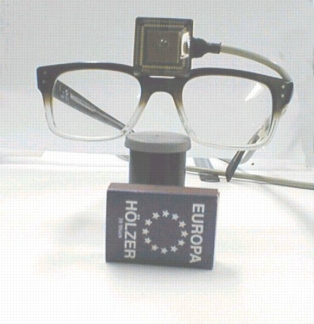ASIC laboratory Heidelberg
Content
The electronic vision
In his visionary book "Cybernetics", Norbert Wiener was the first to propose to substitute the sense organ eye by an artificial, electronic aid. Interestingly enough, Wiener mentioned already the possibility to find other ways to the visual cortex than via the eye. During the sixthies, first realistic experiments with so called tactile visual substitution systems were undertaken by P. Bach-y-Rita in the United States. The fundamentally positive results were opposed by technical limitations in the area of image acquisition and processing.
 |
The Heidelberg project for tactile Vision was started in 1995. New attempts are made by using highly integrated micro electronics for image acquisition and image processing and by doing fundamental research in tactile perception. Development of the complete system was performed at the ASIC laboratory in Heidelberg. In detail, intelligent image sensors (Vision chips), analogue network chips for image processing, and methods for the tactile output were developed within this project. In 1998 a prototype of the complete system was used successfully for the first time in the eye clinic in Heidelberg and in the school for blind people at Ilvesheim. Besides the development of instrument-making the project also delivers fundamental insight into the tactile perception of blind people. Main emphasis is put to this in the cooperation with the université Louis Pasteur in Strasbourg. The picture shows the camera chip together with an optical system mounted onto eye glasses. |
Further information is provided on the Vision's group home page.
